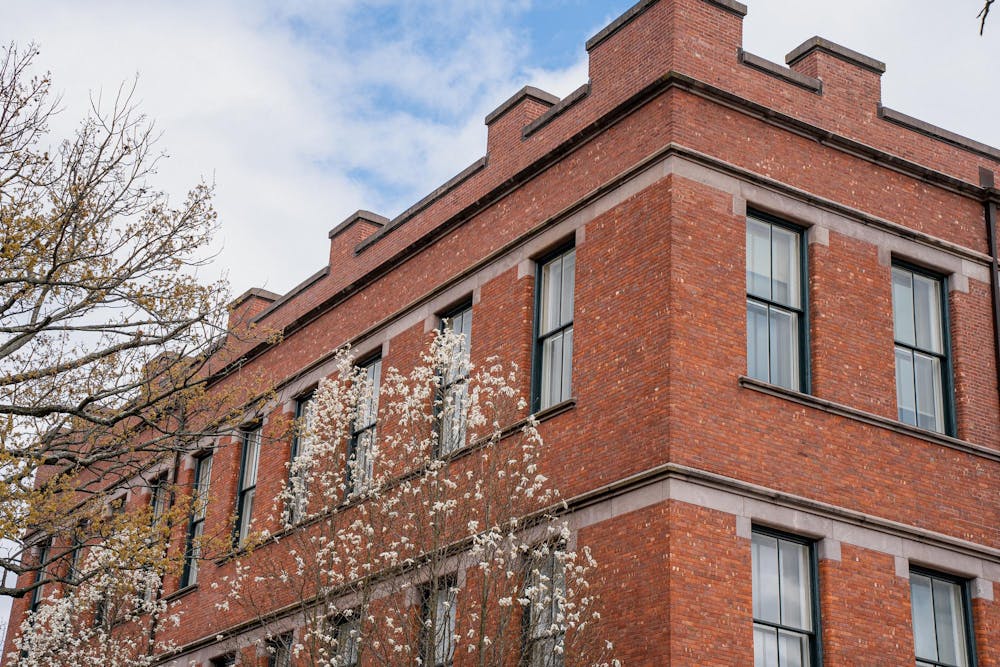Princeton’s campus hosts a diverse range of classroom environments, from lecture halls with projection technologies to seminar rooms with round tables. With course selection occurring this week, students are in the midst of planning their Fall semester schedules — including the rooms where they will be learning. We broke down the classrooms on campus, analyzing occupancy, technology, and location.
Classroom booking, scheduling, and access is organized through the Office of the Registrar. However, outside of teaching hours, classrooms are frequently vacant and accessible to students, faculty, and staff for study sessions, meetings or other purposes.
Around 62 percent of all available learning spaces hold 25 people or fewer. Medium-sized classrooms are slightly less common on campus, with 30 percent of rooms having maximum occupancies in the 26-99 person range. Lecture halls and large conference spaces exist in far fewer numbers, at just under eight percent of classroom spaces, or 24 total high-occupancy spaces. McCosh 50 has the highest occupancy out of all classrooms, having a maximum capacity of 447 students. The three most enrolled classes this semester — POL 396: International Organizations, ENG 304: Children’s Literature, and COS 126: Computer Science: An Interdisciplinary Approach — all hold their lectures in McCosh 50.
The University sorts rooms into four categories: standard classrooms, seminar rooms, lecture halls, and bowls. Standard classrooms, characterized by a presenter setup and a small number of row-by-row desk arrangements, are most common. These are followed by seminar rooms, then lecture halls and bowl classrooms. Bowl classrooms are unique to Robertson Hall, which houses the School of Public and International Affairs (SPIA), and feature a sunken-row arrangement and presenter-focused stage.
Standard classrooms most frequently host precepts, capped-enrollment class sections, or office hours. Seminar rooms, however, are mostly dedicated to courses taught seminar-style — usually three-hour small-group blocks during an afternoon weekly class time. The Office of the Registrar usually caps enrollment of courses that use these seminar rooms to 15 students.
The classrooms at Princeton span 63 buildings across campus. With 20 available classroom spaces each, McCosh Hall and Green Hall host the highest concentration of rooms. However, the distribution of rooms is not dominated by any select buildings.
The ten buildings with the most rooms collectively contain approximately 24 percent of Princeton’s classrooms. Among these buildings are Friend Center, Fine Hall, and Julis Romo Rabinowitz (JRR), which span across multiple departments and disciplines, being home to the Computer Science, Mathematics, and Economics programs, respectively.
“The seminar rooms in East Pyne are my favorite,” said Christine Guo ’26, who notes some of her favorite courses and precepts in the East Asian Studies department were hosted there. “The all-wood paneling in the rooms feels cozy and the smaller size makes the discussions more intimate.” She noted that in some of the larger lecture halls, “it’s sometimes more intimidating to speak up and participate in a room full of 200 people.”

In deciding where to host classes, precepts, or study sessions, students and faculty may consider the technology installed in a classroom, including its compatibility with laptops, projection, or wireless displays.
The Registrar’s classroom data showed that out of 301 classrooms, a whopping 200 — or about 67 percent — now support wireless Apple TV or AirPlay connections, allowing users to display contents of their device screens to the room’s setup without cords. Of the remaining 101 classrooms, 88 host wireless or cable connections, allowing for the same display system, just requiring cable hardware. Only 13, or four percent of all Princeton classrooms, have no Audio/Visual system support — that is, they do not contain tools such as projectors, screens, or microphones.
Professor of History and International and Regional Studies Michael Laffan appreciates Apple TVs as a way of integrating visuals into the classroom, noting that “it’s a lot less clunky than when a few years ago, we had to deal with multiple [forms of] media, which included CD Players, and even VHS tapes.”
In addition to including access to various forms of technology, almost 70 percent of Princeton classrooms also contain blackboards.
Laffan equally appreciates the presence of blackboards in the classroom. He emphasizes that “it’s important to have such physical infrastructure” for the purpose of recording “impromptu brainstorms” or making students draw a map.
Size, location, and available technology have the potential to influence classrooms’ roles as spaces for study sessions, club engagement, and discussion. As students think about upcoming course enrollment in the Fall, the features of their courses’ classrooms may help them decide if the structure of their class will be the best learning environment for their programs of study.
Chima Oparaji is a contributing Data writer for the ‘Prince.’
Lauren Zaidel is a contributing Data writer for the ‘Prince.’
Please send any corrections to corrections[at]dailyprincetonian.com.








